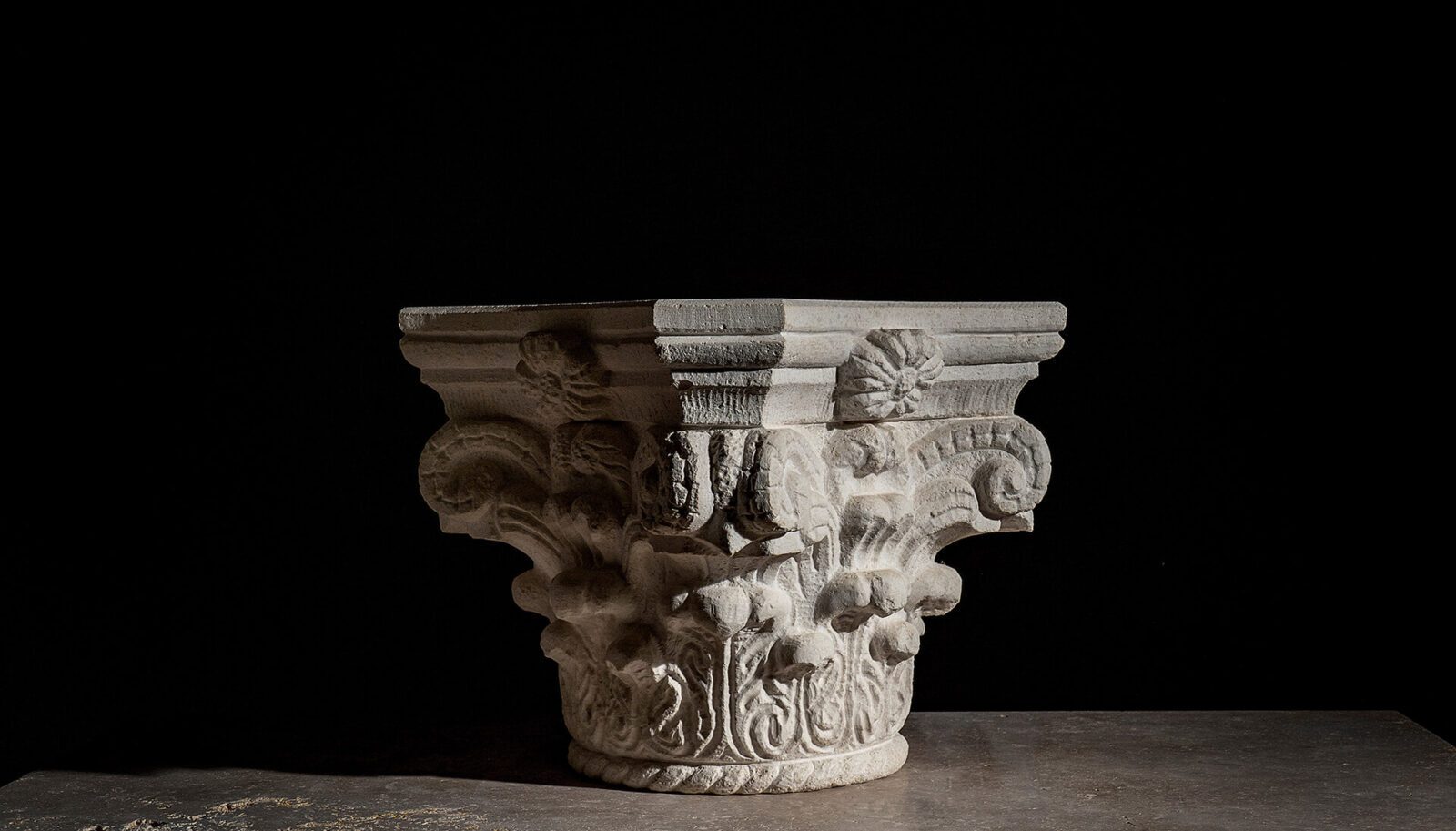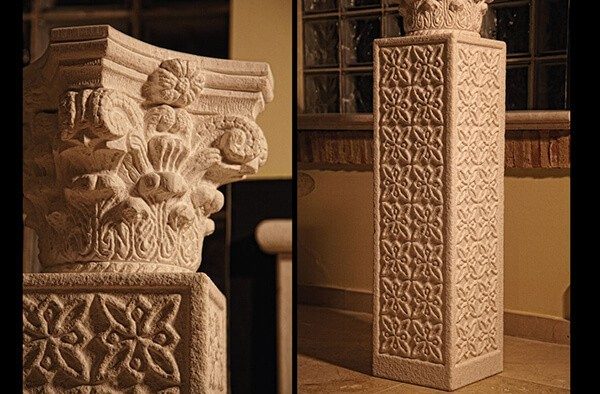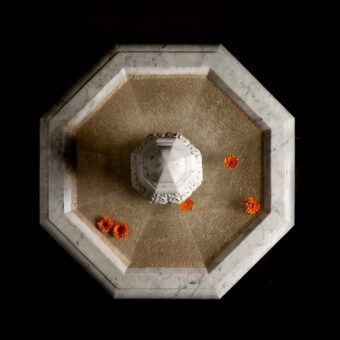ACANTHUS
The Corinthian capital designed by Callimachus owes its origin to the moment he saw a basket full of acanthus leaves which astonished him…
| Weight | 55 kg |
|---|---|
| DIMENSIONS | CAPITAL: 25,5 CM (H), 18,5 CM (Ø BASE), 36 CM (Ø SUPERIOR) |
| MATERIAL | LIMESTONE CAPRI |
| DELIVERY TIMES: | 35-45 DAYS |
The third of the Greek orders was also the last one to appear (4th century B.C) The first examples of the use of Corinthian order are in the Temple of Apollo Epicurius at Bassae and in the choragic monument of Lysicratesin Athens. The Corinthian order was not a structural system, like Doric and Ionic, but it was just decorative and its effect stemmed almost entirely from its well-prepared floral capital. This capital was a design by the Athenian sculptor Callimachus. According to Vitruvius and, and looking at its original shape it could have been worked in bronze. Apart from this capital, the rest of the elements took were borrowed from the Ionic order. From the Hellenistic period on, the idea of the Corinthian usewas starting to becarried out but it was Romans that connected all the elements and perfected it. Vitruvius stated that the Corinthian order imitated the “grace of a damsel”. The over all effect is all elegance and beauty.
The acanthus is a plant rich in symbolism whose name comes from the Greek “akantha” (thorn). These spines represent difficulties in life and they also make reference to the triumph over adversities. In Greece, the acanthus had a funeral connotation and their leaves decorate graves and mausoleums, representing: immortality, the presence of the live memory beyond death. Besides, their leaves are above the perennial ones. As they are carved in stone, they become immortal. The thorny acanthus leaves disclose something inspiring: difficulties will one day turn into stepping stones to the top and behind every challengeis a new opportunity.
The discovery of the Corinthian capital was supposedly: A Corinthian maid, who was too old to get married, died of an illness. After her funeral rites, her nursemaid took some glasses that the deceased really liked to place all of them in a wicker basket and took them to her grave where she placed them. Hoping that they will be in perfect conditions for a long time, she covered them with tiles. She placed the basket on the root of an acanthus plant by chance. Over the time, the roots -crushed by the weight of the basket- started to grow around the grave. When the spring began, its stems were growing around the basket so quickly that they could already be noticed under the tiles. This forced them to assume curved shapes or volutes in their ends. Callimachus, when passing by the tomb, was totally amazed by the curious shape of the leaves and wanted to imitate it.
The capital has got two rows of eight acanthus leaves and a perfect shape. From the top, stems ending in volutes or helix sprout appear. They hold the abacus (upper stone) that distinctively owns four concave faces. In the middle of each face there is an “antemiyon”(honeysuckle design).
Ad astra per aspera (to the stars through hardships).
















